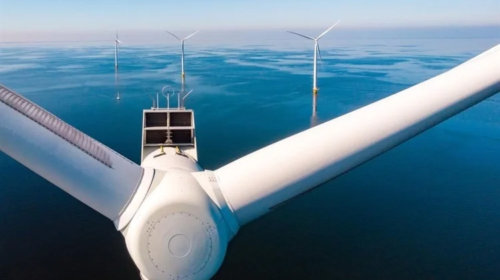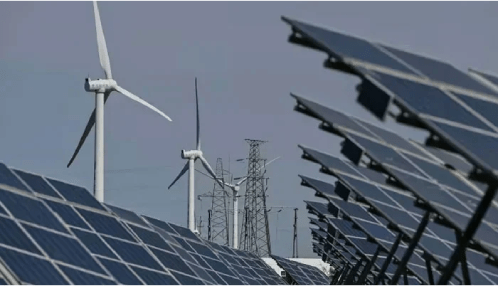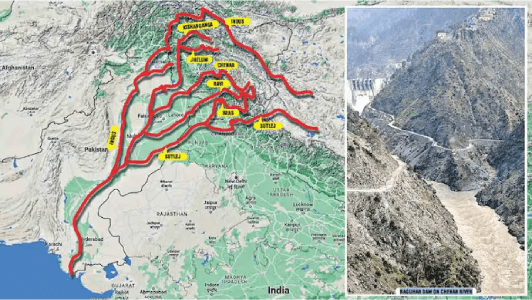Scientists from Pakistan and Saudi Arabia have proposed real-time dispatch strategies for automatic generation control for the optimization of wind power and energy storage in electric vehicles. In the study, the performance of the strategies has been assessed and discussed in detail. The research has been published online in the journal
Renewable energy has evolved at a breakneck rate over the past few decades. Wind power especially has seen massive growth in both technological sophistication and installation worldwide over the course of the past decade. The global share of wind power in the energy mix is growing yearly. A significant number of wind turbines are directly connected to energy grids.
However, despite wind being an abundant and limitless energy resource, there are some challenges with wind power. Power generation relies primarily on wind speed, which cannot be accurately predicted. The possibility of energy gaps due to uncertain wind speeds is an ever-present problem with wind power. Deviations between power generation and power exchanges from expected values can occur.
To overcome these issues, various scheduling approaches are employed by system operators which balance power generation and load demand on a daily basis. Due to the inherent imbalances in wind power generation, operational reserves are often employed to provide power during time periods when energy generation is low. These reserves usually come from conventional power stations which exploit non-renewable fossil fuels.
Using carbon dioxide-emitting conventional power plants to fill the energy gap in renewables obviously presents a conundrum: if fossil fuels are still being used to provide crucial power needs, however small their use may be, how can we achieve true net-zero carbon emissions? Clearly, strategies must be developed which optimize renewable power generation and energy storage to fully exploit the potential of the sector.
Providing active-balancing power generation operations for wind power that work like conventional power plants is a crucial element of improving wind power and reducing reliance on fossil fuels. Enhanced coordinating control strategies are needed to optimize wind energy capacity for regulatory purposes. Implementing these strategies can reduce both carbon emissions and operational costs, improving the reliability and secure operation of wind power.
Studies over the past decade have focused on different strategies to achieve this, both in academia and industry. Ancillary services for wind power plants have been widely investigated and proposed. Studies have demonstrated the economic advantages of wind power for the worldwide energy mix, despite its minimum performance score. This score can be improved if sufficient wind power is available and systems are developed which help wind turbines accurately and rapidly track the power command signal from the automatic generation control.
Furthermore, the effectiveness of wind power resources can be maximized by improving the flexibility of loads, to help them actively participate in load generation on a need-by-need basis. Technologies such as electric vehicles, cold storage units, and heat pumps can act as flexible loads, contributing actively to ancillary services in power grids.
The study in Energies has investigated the optimization of wind power generation and the use of electric vehicles as flexible load systems for energy storage to support future energy grids with massive wind power integration.
The study has provided a comprehensive review of current literature in the area. Whilst there has been significant progress in the area of integrating wind power generation and electric vehicles to optimize performance and flexible load generation and energy storage, the authors have noted several bottlenecks in current technologies and research.
The research aims to create a simple, robust automatic generation control system, with integrated wind power generation and electric vehicle storage. In the proposed technological solution, a thermal generation system is used to enhance active power regulation. The research’s proposed dispatch strategy in the automatic generation control system overcomes major challenges with developing an integrated wind power plant/electric vehicle power generation system.
The challenges overcome include power curtailment issues, dead bands, delays, economical operation of services, and environmental stresses. However, the study has not addressed issues such as voltage and reactive power control strategies, as it only emphasizes active power control strategies.
Three case studies have been analyzed and developed by the authors: Integrating the capacities of the thermal system into the automatic generation control system, studying integrated wind power plants and thermal systems, and finally, integrating electric vehicle storage with thermal systems in the automatic generation control system. Results of the study’s analyses demonstrated that integrating wind power plants, electric vehicle battery storage, and thermal systems reduced both the power imbalance and costs of the proposed systems.
Future research directions identified by the authors include the integration of building loads along with electric vehicles which could further reduce conventional power needs, developing an AI-based automatic generation control system, and using the proposed system at a micro-grid level, which is more effective for systems with decreased inertia sue to large-scale renewable energy resource integration.







